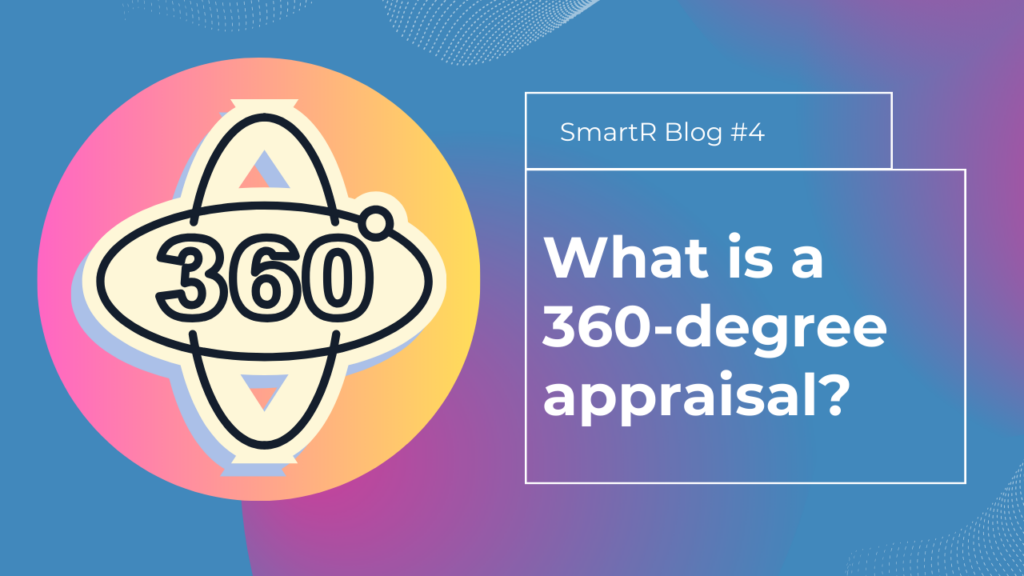Performance reviews are crucial for employee development, but are you getting a full picture of your employee’s performance? Traditional appraisals often rely on a manager’s judgements, leaving valuable insights undiscovered. This is where 360-degree appraisal comes in, offering a panoramic view of an employee’s performance. In this blog, we will discuss what a 360-degree appraisal is and its benefits.
So, what is a 360-degree appraisal?
A 360-degree appraisal is a method of employee evaluation that takes into account feedback from multiple directions or sources across an organization, especially from those who regularly interact with the person being evaluated, such as coworkers, a direct manager, an administration professional (e.g., HR manager), and customers.

What’s the difference…
This type of evaluation process is used to measure employee strengths, weaknesses, and skills and can provide a well-rounded performance review. It aims to help employees improve their work skills and behavior toward better performance and productivity. For example, when an employee takes on a project, their manager needs to have a holistic overview of their technical skills, strengths, weaknesses, and feedback from colleagues and customers throughout the duration of the project. This allows the manager to make data-based decisions regarding training, support, and performance evaluation.
While traditional evaluation often focuses on an employee’s achievements and ability to hit KPIs, 360-degree appraisal sheds light on the less quantifiable and more “human” aspects, such as their skills, initiative, behavior with teammates, and alignment with their organizational values. In a traditional appraisal, a manager might rate an employee as “meet expectations” because they consistently meet deadlines. However, if that employee’s colleagues say that they are often unwilling to help other colleagues, this could indicate that the employee is not a good teammate. 360-degree evaluation can uncover similar situations that a manager might not be able to see.
A 360-degree appraisal is suitable for
1/ Overall performance evaluation: 360-degree appraisals provide a comprehensive view of an employee’s performance, including aspects that may not be visible from the perspective of a direct manager, such as leadership abilities, communication skills, and customer feedback. These aspects are subjective. For example, a manager might appreciate a designer’s creativity, but the customers who receive the outputs of such designers might not be satisfied with the quality of the work. In these cases, 360-degree appraisals are valuable in identifying areas for improvement that might not be apparent to a manager.
2/ Professional development evaluation: 360-degree appraisals help employees identify their strengths and weaknesses, as well as identify areas for development. In addition, 360-degree appraisals also help the manager develop a training program that is tailored to the needs of each employee. This will help them to develop their strengths and improve their weaknesses, leading to increased productivity and efficiency.
3/ Succession planning evaluation: Promotion decisions impact individuals and organizations. So, managers must evaluate employees comprehensively for accurate promotions. 360-degree appraisal is a useful tool that helps managers identify potential employees for future leadership positions. Based on the results of 360-degree appraisals from multiple stakeholders, managers can see the employee’s performance ratings from multiple perspectives. If the ratings from supervisors, peers, and customers are all high and meet the manager’s expectations in both technical and leadership areas, then the manager can consider the employee a talented candidate for future leadership positions.
> Read more about Performance Appraisal
> Try our awesome automate system
The benefits of 360-degree appraisal
1/ Holistic perspective: Unlike traditional methods that only rely on direct manager feedback, a 360-degree appraisal gathers input from various stakeholders, including coworkers, managers, and even customers. This provides a more comprehensive picture of the employee’s performance, uncovering strengths, weaknesses, and blind spots that might be missed otherwise.
2/ Expand self-awareness: By utilizing 360-degree appraisals, employees can gain a deeper understanding of their strengths and areas for improvement. This awareness motivates employees to work towards self-improvement, develop new skills, and improve existing skills. This self-awareness also bridges the difference between how employees see themselves and the opinions others have of them.

3/ Reduce bias: By aggregating various perspectives, the 360-degree appraisal can minimize the influence of individual biases and personal opinions. This ensures a more objective evaluation process; hence, it creates safety and provides useful conclusions for personal and team development.
4/ Talent identification: 360-degree appraisal helps the organization identify high-potential employees by gathering feedback from various stakeholders. It reveals hidden talents and leadership potential beyond just performance metrics. This identification in leadership qualities, strong interpersonal skills, and quick adaptability brings much more nuances to an organization with a growth mindset. As a result, the organization may promote them for suitable positions based on their unique abilities to better serve a shared goal between themselves and the organization.
5/ Identifies training gaps: Personal and organizational skill gaps in training are identifiable with the 360-degree performance appraisal. The appraisal provides insight into individual, departmental, and organizational skill competency. The provided insight gives management and L&D Department the opportunity to implement suitable and targeted training programs to bridge any competency gaps and/or hone in on specific competencies with the organization’s people strategy.

> Read more Personalized Learning
Conclusion
A 360-degree appraisal is a valuable tool for evaluating employee performance and the potential of their employees. This tool enables employees to receive feedback from multiple sources and use it to map out their career paths. Before making critical decisions about an employee’s career, organizations gather 360-degree appraisal about the employee.
